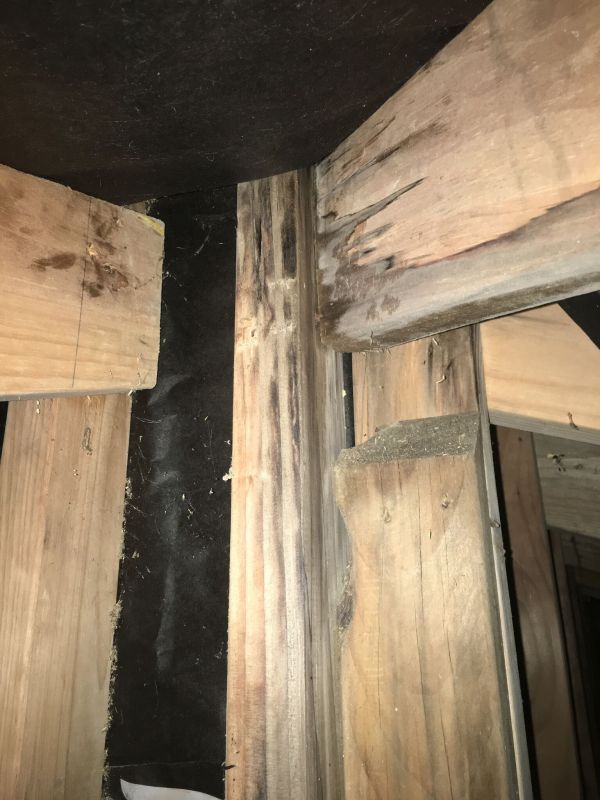Leaky Building Inspections
What is a "Leaky Building"?
All buildings can leak if they are not properly maintained. Even brick and tile homes can leak which is why it is essential to get a pre-purchase inspection done before you buy or sell. You don't want to have your sale or purchase fall through because there are issues that nobody knew about.
That said, the classic Leaky Home is likely to be one that was built within the period from approximately 1994 to 2004, that uses untreated timber in its construction and has exterior monolithic cladding. When external moisture penetrates through the cladding, it rots the untreated timber away over a period of a few years and in extreme cases leads to structural failure. By external moisture penetration, we are of course referring to the New Zealand weather, and not any issues with internal plumbing or pipe work. A leaky home can have a devastating effect on your financial position because repairs can easily cost hundreds of thousands of dollars. If well maintained, a monolithic clad building can remain weather tight and won't leak significantly however this comes down to regular painting since it is the paint that repels the moisture in the first instance.
What Causes Leaky Building Syndrome?
Traditional New Zealand homes were typically constructed with timber weatherboard cladding. Theywere also well ventilated and therefore any moisture ingress was able to dry out naturally. The more recent trend to Mediterranean style of housing saw a shift towards using monolithic cladding such as cement sheeting or plaster on polythene. Over time, the cladding would crack, allowing moisture to pass into the cladding where it could not dry out because the plaster systems were in fact reasonably airtight. In conjunction with the use of untreated timber, which was approved for use by the NZ government and building industry in 1998, a perfect storm developed. Leak prone plaster holding on to moisture adjacent to untreated timber resulted in rotting timber and the leaky building syndrome we know today. It is a sad fact that Tauranga has the largest proportion of leaky homes in New Zealand, outside of Auckland.

What Are The Features of a Leaky Home?
Monolithic cladding and untreated timber are not the only features of a potentially leaky home. Other features that may contribute to a property being leaky Include:
- Flat roofs or roofs that have parapets
- Pergola and Handrail fixings which pierce the cladding
- Little or no clashing around windows and doors
- Decks over the top of living areas
- Balustrade to wall junction or deck
- Insufficient ground clearance at the bottom of cladding
- Insufficient internal floor differential - less than 150mm above external ground level
The presence of any of these features does not automatically mean that the house is a "leaker", only that the house has a higher probability of leaking at some point. Therefore booking a leaky building inspection from a qualified inspector is the only way to be certain.
Things to Look Out For
If you are buying or selling and you suspect that you might have a leaky property, you should book a building inspection. However there are a few signs that you can look out for:
- Cracks or flaking of paint work on cladding
- Ceilings that are sagging
- Corrosion or rusting of fittings such as nails or screws
- Uneven Vinyl or wooden floors or vinyl lifting
- Excessive mould or fungi formations
- Musty or damp odour (although lack of odour does not mean your house is not leaking)
- Doors and windows that may not shut easily because the timber has swollen
- Stained or discoloured surfaces and walls
- Rotting or stained carpet, rusty carpet fittings.
Our inspectors have over 35 years of experience in the building industry and can give you a same day report. Don't delay, book your pre-purchase building inspection today.



